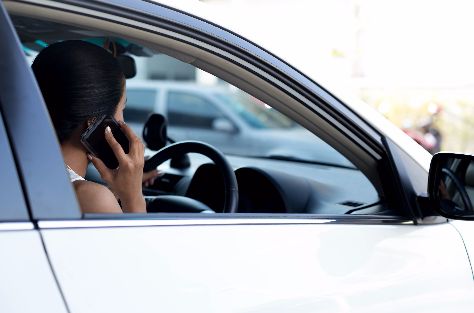How to Eliminate Bad Habits and Improve Driving
Driving dangerously can cost lives. According to the government website, there were 1,780 road deaths in the year up to September 2015.
We’ve put together a list of bad driving habits; so think about those figures next time you get in your car.
Using a mobile phone.
With the evolution of technology, it’s becoming harder and harder to escape the digital world. Using your mobile phone whilst on the road is one of the worst driving habits and it’s also illegal.
If you’re taking a longer journey, then keep your phone out of reach. If you can’t see that you’ve got a text whilst driving, then you won’t be tempted to check it every 30 seconds!
Most modern phones come with a Bluetooth or hands-free setting, and if your car does too, then you should use this instead of holding your phone. If it’s not an important text or call, then they can wait. The safety of you and those around you is infinitely more important whilst you’re driving.
Lane Jumping
Lane jumping is another bad driving habit you need to break as soon as possible. It makes you unpredictable, and just because you know what lane you should have been in, it doesn’t mean other road users do.
Plan your journey before you leave home, and if going through an unfamiliar area then read the road signs as you approach them. Trying to skip from one lane to the other puts yourself and others in danger.
If in doubt, then find a safe place to pull over – in a car park or lay-by – and find out where you went wrong. If you’re still struggling to find out what lane you need to be in, try to find an alternate route to your destination.
Failing to indicate
Linking back to lane jumping, just because you know where you’re going doesn’t mean everyone else does. Indicators are designed to forewarn other road users of which direction you’re going to be driving.
Never assume that everyone outside of your car is psychic. Use your indicators and let others know where you’re going, before an accident happens.
You not indicating can put pedestrians or cyclists in danger. If you’re planning to turn left, but they think you’re going straight on, they could try to cross the road in front of you.
Tail Gating
Everyone has experienced this in the past, and some drivers are guiltier of tail gating than others.
There are two main differences between tailgaters. The “you need to move out of my way now” tailgaters and the “you just keep going, I’m just following” ones.
If you find yourself tailgating as the former, then back off from the driver in front. They may not be as confident on the road, and a nervous driver makes mistakes. Nowhere can be so important that you’re putting yourself and other drivers in danger.
If you think you’re tailgating as the latter, then check your distance. If they slammed on their brakes suddenly, would you have the chance to stop before crashing into the back of them? Sometimes it’s unconscious; you might not even realise you’re that close.
So there we have it, some of the most common bad habits of drivers, and how to eliminate them. Making clear and conscious choices to be a safer driver can be the difference between accidents and stress-free driving.
What do you think? If you’ve experienced any of these recently and have a unique way of dealing with them, then do get in touch; we’d love to hear from you.




